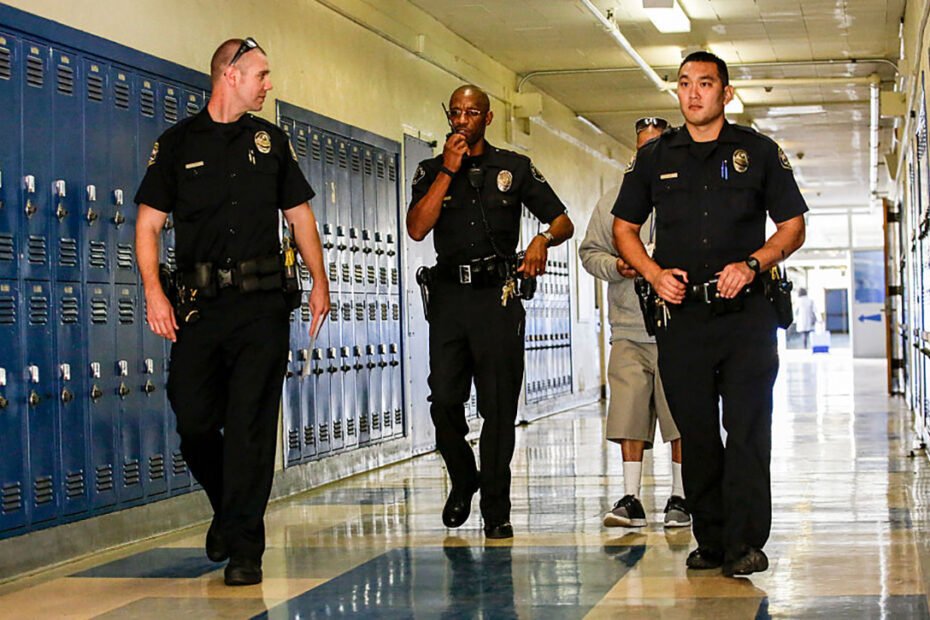Evidence shows that police presence in schools is not an effective way to improve school safety. Instead, schools should focus on implementing evidence-based solutions that promote positive student behavior and create a safe and supportive learning environment.
The presence of police officers on school campuses negatively impacts the youth in a number of ways including:
- Increased criminalization of students: Students are more likely to be arrested and referred to the criminal justice system for minor offenses when police officers are present in schools. This is especially true for students of color, students with disabilities, and LGBTQ+ students.
- Reduced trust in law enforcement: When students have negative experiences with police officers at school, they are less likely to trust law enforcement in general. This can make it more difficult for them to seek help from the police when they need it.
- Fear and anxiety: The presence of police officers can make students feel unsafe and anxious, both in school and in their communities. This can lead to decreased academic achievement, increased absenteeism, and other negative outcomes.
- School-to-prison pipeline: The school-to-prison pipeline is a process by which students are funneled into the criminal justice system through disciplinary actions at school. Police presence in schools exacerbates the school-to-prison pipeline by increasing the likelihood that students will be arrested and referred to the criminal justice system for minor offenses.
Evidence-based solutions that should be used instead of police officers in schools:
- School counselors and social workers: School counselors and social workers can provide students with the support they need to address behavioral and emotional challenges. They can also help students develop positive coping mechanisms and conflict resolution skills.
- Positive behavior interventions and supports (PBIS): PBIS is a comprehensive approach to school discipline that focuses on preventing problem behaviors and promoting positive behaviors. PBIS has been shown to be effective in reducing discipline referrals and suspensions, and improving school climate.
In addition to the evidence-based solutions listed above, there are a number of other things that schools can do to improve school safety without involving police officers. These include:
- Building strong relationships between students and adults: When students feel connected to their teachers and other school staff, they are more likely to feel safe and supported. Schools can build strong relationships by creating a positive school climate and providing opportunities for students to interact with adults in meaningful ways.
- Teaching students about conflict resolution and social-emotional learning skills: Schools can teach students how to resolve conflicts peacefully and manage their emotions effectively. This can help to reduce the likelihood of problem behaviors occurring in the first place.
- Creating a safe and supportive school environment: Schools can create a safe and supportive environment by removing hazards from campus, implementing bullying prevention programs, and providing support to students who have been traumatized.
By focusing on these evidence-based solutions, schools can create a safe and supportive learning environment for all students without involving police officers.


